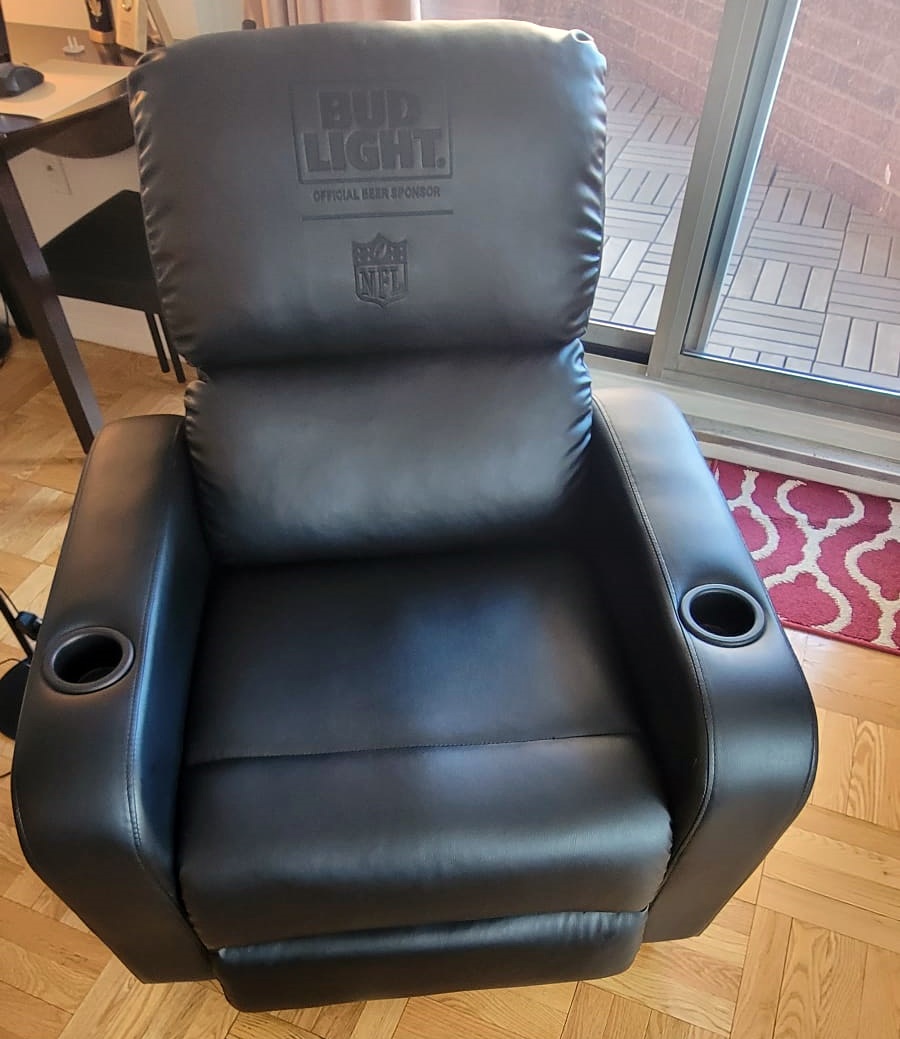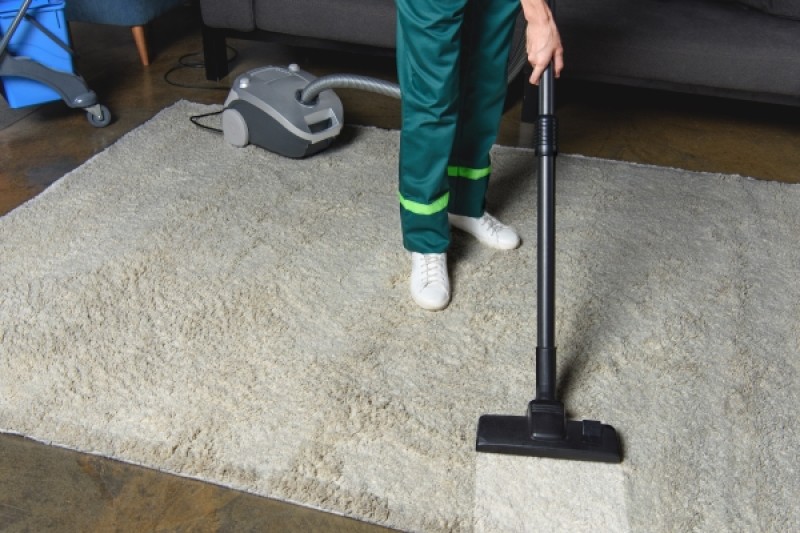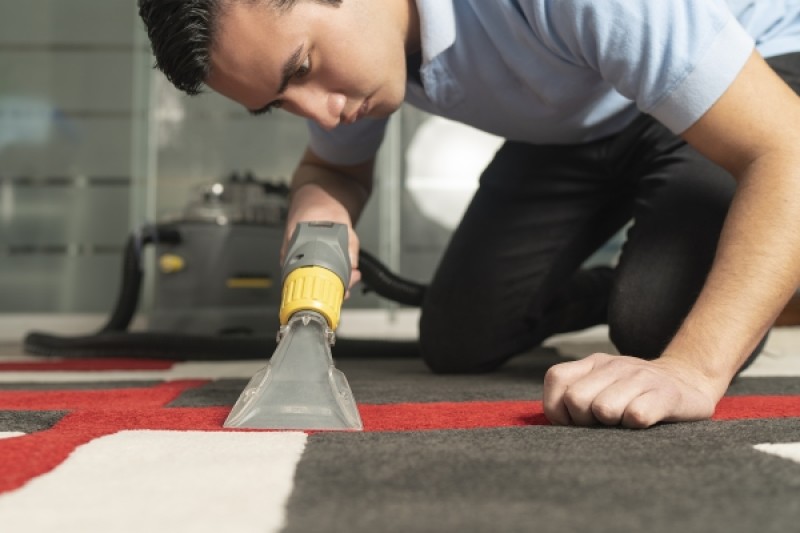With its luxurious feel and look, leather certainly adds a touch of class to any room. Whether it's a leather couch for the living room, or a comfortable leather chair (or even gaming chair) next to the fireplace or window, leather furniture is a staple in many homes. Yet how do you clean a leather chair or couch? Homeowners often ask this question and in this article we will discuss step-by-step how to clean a leather couch or chair.
What is Leather?
Leather is animal hide, usually from cattle, that has been processed and tanned to preserve against natural decay. There are several tanning methods including vegetable tanning, chrome tanning, aldehyde tanning, and synthetic tanning, each creating a different suppleness and durability of the leather product. It is then finished with oils and waxes to create the finished look. It’s important to know what leather is, so that you can understand how to clean it.
Leather Used in Furniture
There are many qualities of leather that vary based on its method of manufacturing. The variables that determine the type of leather are the layer of skin used from the rawhide and coatings added to the layer.
Full Grain Leather
Considered the highest quality leather, full-grain leather includes the entire grain layer, as it hasn't been sanded, buffed, or corrected to remove imperfections. In this way, it is thicker and more durable than other types of leather. It does not have a topcoat on it, making it susceptible to staining. Yet because of its raw surface, it does develop a patina over time. It is used in high-end furniture, including sofas and chairs that are designed to age well and last for decades.
Top-Grain Leather
This is the second-highest quality leather, where the split layer has been separated away, making it thinner and more pliable than full-grain. The surface is sanded and a finish coat added, which results in a colder, plastic feel with less breathability, but with greater stain protection. It is used in luxury furniture, offering a balance between quality, durability, and cost. It's less durable than full-grain but more resistant to staining.
Split Leather / Suede
Split leather is made from the highly porous, lower fibrous part of the hide, left once the top-grain has been removed. Split leather is used to make suede, and does not receive a top coat, making it susceptible to moisture and staining damage. It's less durable and cheaper than both full and top-grain leather. It is used in furniture that requires softer, more pliable leather, like the backs and sides of sofas.
Bonded Leather
It is made from leftover scraps and fibers of leather that are bonded together with polyurethane or latex. It is the least natural form of leather, with generally only 10%-20% actual leather content. Because of its composition and coatings, it is not porous and much less prone to staining and absorption of liquids. It is less durable and wears more quickly than higher-quality leathers and is used in economical furniture options, giving the look and feel of leather at a fraction of the cost.
Nubuck Leather
Similar in feel to suede, nubuck is top-grain leather that has been sanded or buffed on the grain side to give a slight nap of short protein fibers, producing a velvet-like surface. As nubuck is top-grain whereas suede is split leather, it has more durability but similarly to suede, both have little to no top coat, making them porous and susceptible to staining. It is used in luxury furniture that has a soft, velvety surface, though it requires more maintenance and is susceptible to staining and fading.
Aniline Leather
Purely dyed with soluble dyes without covering the surface with topcoat paint or insoluble pigments. The leather’s natural wrinkles and imperfections are visible, showcasing the leather’s natural surface. Because it does not have a topcoat, it is more porous and susceptible to staining. It is used in high-quality furniture which shows the natural beauty of the leather.
Semi-Aniline Leather
Similar to aniline leather, semi-aniline is only dyed with soluble dyes but does receive a thin topcoat. This makes the leather a little less soft to the touch but adds durability. Because of the top coat is less susceptible to staining as the leather isn’t as absorbent.
Can you Steam Clean a Leather Couch or Chair?
As a carpet cleaning company that steam cleans fabric furniture on a daily basis, we get this question about leather couches and chairs often. Steam cleaning is a process which injects hot water into fabric at high pressure and then simultaneously removes it using a wet vacuum. This process saturates the fabric, lifting any stains and dirt. Although tempting, it is not advisable to steam clean leather as water saturation will dry out the leather and this aggressive cleaning technique is not necessary to clean leather.
How to Clean a Leather Couch or Chair
Cleaning your couch or chair depends on the type of leather that you have on your furniture item. Examine your couch or chair and determine which type of leather you have. Now, let’s break it down by leather type.
Full-Grain, Top Grain, Aniline
Vacuuming
Removing large debris and sitting dust by vacuuming is the easiest way to keep your leather furniture clean. Remove pillows if possible and vacuum inside crevices of the couch.
Maintenance and Spills
Due to their porous nature, treat spills quickly by absorbing and blotting with a white cloth. For regular maintenance, take a damp cloth and wipe your couch or chair clean.
Cleaning and Conditioning
Every 6 months, use a leather cleaner to remove dirt and oils. Apply to the surface of your couch and chair and agitate it gently with a soft brush. Wipe clean. Afterwards, apply a leather conditioner to keep the leather moist and to prevent cracking.
Semi-Aniline & Bonded
Maintenance and cleaning/conditioning is the same as with the more porous leathers but cleaning up spills are less urgent due to these leathers’ composition and top-coat. For the best possible results, treat spills immediately with a clean white cloth and blot dry.
Suede and Nubuck
Vacuuming
Although less common, suede and nubuck couches and chairs exist. Vacuuming is a very important step in this process as these types of leather have a pile which attracts and holds on to dirt particles. Thoroughly vacuum the surface of these furniture items regularly and get into the cracks and corners of the item as well with a crevice tool.
Maintenance and Spills
Suede and nubuck require special cleaners and brushes for maintenance cleaning as well as stain removal. You can find these cleaners and brushes on Amazon. If a spill happens, blot dry immediately with a clean rag.
Protection
Spray protectors are available for suede and nubuck. They may slightly change the feel of the leather but create a barrier against soiling. This may be a great idea if your suede chair or couch has a lot of traffic.
Re-Dyeing Leather
For stains that cannot be removed, you can attempt to re-dye the offending area with a color balm. Just make sure that it is the same or similar color as the original piece. Othersie, if you cannot find the exact match color, you can re-dye the whole item, thus hiding the stain.
Leather Cleaning Company in NYC
If you have a damaged couch or chair in NYC that needs care, give us a call! We clean and restore leather upholstery to fix stains, cracks, and damage. Give us a call or fill out our quote request form now!
Frequently Asked Questions
It's not advisable to steam clean leather furniture as water saturation can dry out and damage the leather, an aggressive cleaning method unnecessary for leather care.
Clean with a vacuum and a damp cloth, use a leather cleaner every 6 months, followed by a leather conditioner to prevent cracking and keep the leather supple.
Use specialized cleaners and brushes for maintenance and stain removal, and consider applying a spray protector to create a barrier against soiling.
For porous leathers like full-grain and aniline, blot spills quickly with a white cloth. For semi-aniline and bonded leather, spills are less urgent but should still be treated promptly.
Yes, for stains that cannot be removed, re-dyeing the area with a matching color balm or re-dyeing the entire item can be an option to restore appearance.
Clean and condition every 6 months for full-grain, top-grain, and aniline leathers to remove dirt, oils, and to maintain moisture and prevent cracking.
DIY steam cleaning can introduce too much moisture, risking damage to the leather by drying it out, making professional care a safer choice for leather maintenance.




